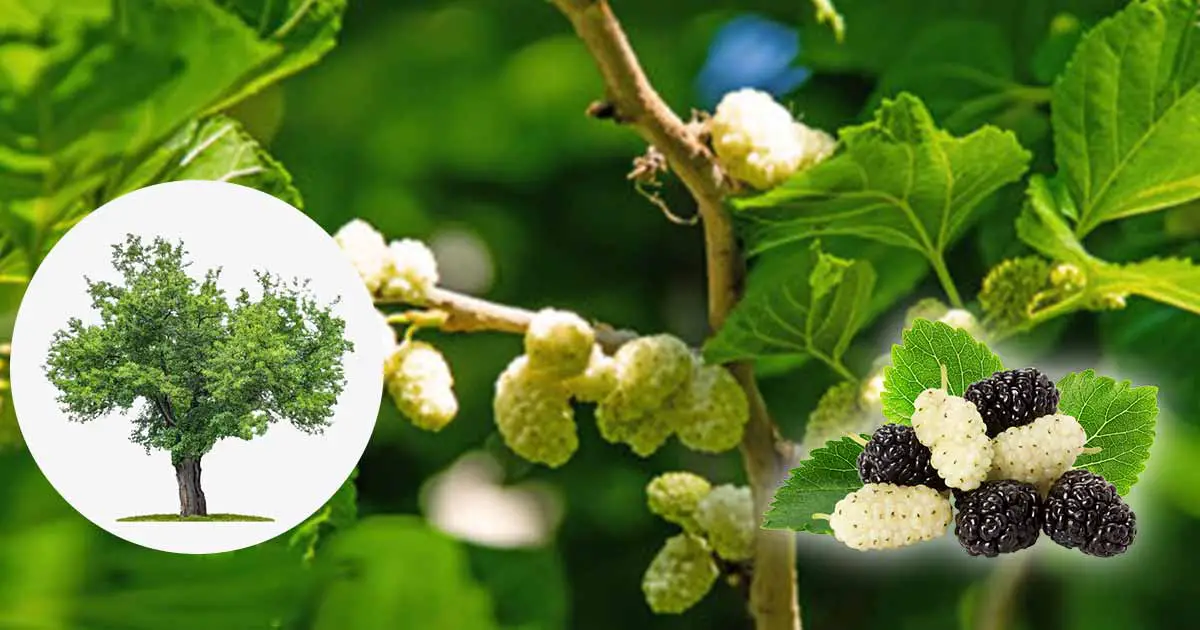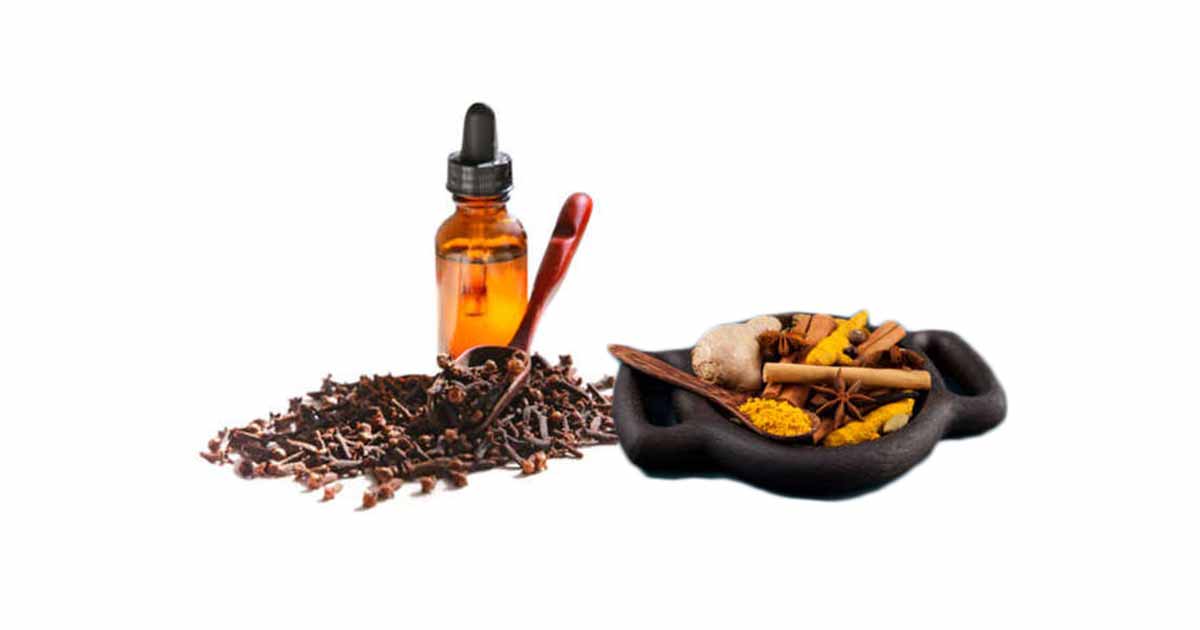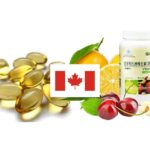White mulberry (Morus alba L.), also called common mulberry, is one amongst the many species in the family Moraceae. Other common names include Chinese white mulberry, silkworm mulberry, moral blanco, Russian mulberry, chin sang, mûrier blanc, and shahtoot.
It originated from Asia (China), but was grown in Europe for the silkworms. It was later introduced to the US during the colonial era in their effort to establish the silkworm industry, and later as fruit, and ornament. Likewise, it is now grown in India, China, Pakistan, Bangladesh, Europe, throughout the United States, largely circulated by birds.
The small to medium deciduous plant can grow up to 30 to 50 feet (15.24 m) in height, 1.5 feet (0.46 m) in diameter, with low branches and spreading crown. Leaves are 3 to 6 inch (15.24 cm) long, alternate, simple, glossy green, vary in shape from ovate to broadly ovate, and turns yellow in autumn.
The flowers can be dioecious (male and female flowers on separate trees) or monoecious (male and female flowers on the same tree), greenish yellow, small, and has dense spikes, and borne on leaf axils.
The ovoid fruits are plentiful, blackberry-like, and ranges from white, nearly black, pink to purple when ripe. Fruits are drupes, and are edible when they ripen. The hard-coated seeds are enclosed in the fruit, with each fruit producing as many as 22 seeds. Seeds are dispersed by wildlife when they feed on the fruit.
The bark is orange-brown with lenticels when young, but becomes gray and rough with long narrow irregular ridges when older. The trunk branching have a smooth (glabrous) or hairy (pubescent) surface. A broken stem produces white, milky sap.
The roots are bright orange, wide, spreading with both tap, and lateral roots.
Mulberries can be grown in woods, meadows, hedge rows, field edges, and civic waste areas. It grows well in partial shade to full sun in acidic, alkaline, and well drained soils.
White mulberry (Morus alba L.), red mulberry (Morus rubra), and hybrids such as white-red hybrids (mother was a white mulberry) and red-white hybrids (mother was a red mulberry) are identical.
The leaves, root bark, stems, and fruits of white mulberry have been used in traditional medicine for their anti-hyperglycemic, antibacterial, anti-hyperlipidemic, anthelmintic, anti-diarrheal, antiparasitic, antihypertensive activities, and as a skin tonic amongst other uses.
Infusion from the mulberry leaves are used as infusion, tea, and powder juice in Japan, and other countries in Asia. The leaves are used as fodder for silkworms, and animals.
Nutritional Composition
The leaves of M. alba contain good quantity of carbohydrate, protein, dietary fiber, vitamins such as ascorbic acid, and β-carotene. Important minerals include calcium, magnesium, potassium, zinc, iron, and low levels of sodium.
Mulberry fruit contain more protein than other similar plants like black berry, strawberry and golden berry. It has more ascorbic acid than the red mulberry. The fruit also contain magnesium, zinc, iron, copper, selenium, potassium, phosphorus, calcium.
Bioactive Compounds in White Mulberry
White mulberry leaves contain flavonoids such as rutin, apigenin, quercetin derivatives and kaempferol derivatives, soquercitrin, and astragalin. There are phenolic acids such as caffeic, syringic, p-coumaric, gallic, vanillic, chlorogenic, protocatechuic, ferulic acids, and caffeoylquinnic acid compounds.
The leaves contain tartaric acid, malic acid, acetic acid, fumaric acid, lactic acid, succinic acids. Flavan derivatives (moracinflavan A-G) and 2-arylbenzofuran derivatives (moracinfurol A and B) have been found, while mature leaves contain a good amount of 1-deoxynojirimycin (DNJ). It also contains alkaloids, tannins, phytosterols, gums, fatty acids, amino acids, terpenes.
The fruit of white mulberry contains cinnamic acid derivatives, flavonols, anthocyanins, benzoic acid derivatives, and small quantity of caffeoylquinic acids (CQAs). The compounds include rutin, chlorogenic acid, caffeic acid, gallic acid, apigenin, kaempferol, quercetin.
Fatty acids (oleic, stearic, palmitic, linoleic, myristic acids) and other compounds are observed. Volatile compounds such as aldehydes, benzene terpenes, esters, ketones, and oxygenated terpenes are found.
The seed is rich in carbohydrates, fatty acids, and protein, while the seed oil contains important antioxidants such as tocopherol, and other carbohydrates and proteins. It is also abundant in fatty acids (stearic, oleic, palmitic, linoleic, myristic acids).
Other constituents of the seed are rutin, quercitrin, 4-prenylmoracin, quercetin, moracin, chlorogenic acid, procatechuic acid, 3,4-dihydroxybenzoic acid, caffeic acids, (+)-dihydrokaempferol and trans-resveratrol.
Mulberry also has oxyresveratrol, a stilbenoid, and 5,7-dihydroxycoumarin 7-methyl ether. Anthocyanin compounds such as cyanidin 3-glucoside and cyanidin 3-rutinoside are also obtained.
Benefits of White Mulberry
Antioxidant property:
White mulberry contains flavonoids such as quercetin 3-(6-malonylglucoside), which are strong antioxidants. Other compounds such as 5,7-dihydroxycoumarin 7-methyl ether, Mulberroside A, and oxyresveratrol from the leaf extract, anthocyanin compounds (cyanidin 3-glucoside and cyanidin 3-rutinoside).
These compounds have radical scavenging properties, and prevent diseases due to oxidative stress such as cardiovascular diseases, cancer, neurodegenerative diseases.
The antioxidant properties of white mulberry could be used to preserve food. Flavonoids and polyphenols present could also flavor, fortify food, while anthocyanins could serve as natural antioxidative food colorants.
Antihyperglycemic activity:
The root, leaves and bark extract of mulberry has been used in traditional medicine to treat diabetes. Compounds like trigonelline, fiber content, and an alkaloid, 1-deoxynojirimycin (DNJ) are responsible for the antihyperglycemic activity.
White mulberry extract decreases blood glucose absorption, inhibited the elevation of postprandial blood glucose and improved insulin secretion.
Lipid lowering activity:
Mulberry leaves, root and bark extract may inhibit fatty acid synthesis, decrease the cholesterol and blood pressure. It also decreases plasma level of triglycerides, and reduced the chances of liver damage in hyperlipidemic rats.
This means white mulberry leaf and fruit extracts reduces cholesterol levels, and may prevent obesity.
Antimicrobial property:
Compounds such as kuwanon G from the extract of white mulberry inhibit Streptococcus mutans, Porpyromonas gingivalis, Streptococcus sanguis, Streptococcus sobrinus.
Other bioactive compounds in white mulberry such as Morusin, mulberrofuran G, albanol B, Sanggenon B and D, kuwanon C, 1-deoxynojirimycin, and a flavonoid, leachianone G have antimicrobial activity against S. aureus, B. subtilis, Streptococcus faecalis, and Mycobacterium smegmatis.
Anticancer effect:
Compounds like prenylated flavanone, 7, 2′, 4′, 6′-tetrahydoroxy-6-geranylflavanone in the root extract has cytotoxic activity against hepatoma cells in rats. Anthocyanins may inhibit the growth of human lung carcinoma cells in a dose-dependent manner.
Other compounds from the white mulberry extract inhibits the formation of tumor necrosis factor-a (TNF-a) in macrophages. Hence, this plant may yield future anticancer medications.
Neuroprotection:
Low levels of gamma amino butyric acid (GABA) in the brain due to free radicals may cause neurodegenerative diseases such as Parkinson’s and Alzheimer’s diseases.
Kang et al. (2006) suggested that anaerobic treatments of M. alba leaves may increase the GABA levels, while increasing neuroprotection in vivo cerebral ischemia.
Also, cyanidin-3-O-β-d-glucopyranoside (C3G), a compound in mulberry fruit extract, have neuroprotective effect on cerebral ischemic damage in vivo.
Liver protection:
Liver damage may be caused by compounds called hepatotoxins e.g., aflatoxin. Mulberry contains flavonoids, coumarine, and stilbene, compounds that have the ability to protect the liver from the damage.
Zeni and Molin (2010) used M. alba hydro alcoholic extract was studied using carbon tetrachloride (CCl4) induced hepatotoxicity in mice. It reduced liver necrosis, tissue damage and vacuoles in the mice.
There are decreases in liver damage parameters such as alanine aminotransferase (ALT), aspartate aminotransferase (AST) and lactate dehydrogenase (LDH).
Prevents atherosclerosis:
Free radicals increase the risk of atherosclerosis, a condition caused by increased production of
free radicals by endothelial and vascular smooth muscles.
Mulberry leaf extract decreased low density lipoprotein cholesterol (LDL-C), and lipid peroxides.
Protects against stress:
Some compounds in natural plants have adaptogenic activity during exposure to stressful conditions. M. alba fruit extracts may adjust the MAO activities during exercise and enhanced physical activities, preventing stress, disorders due to stress and oxidative damage.
Immunomodulation:
Immune system is the body’s defense system against the invasion of diseases. White mulberry contains flavonoids, anthocyanins, polysaccharides, and other compounds that modulate the immune system.
M. alba extract enhanced the humoral and cell mediated immunity in experiment with animals models. It also increased the antibody, phagocytes in the system.
Nephroprotective activity:
In Chinese folk medicine, stilbene glycoside Mulberroside A from the plant has been used to manage gout and hyperuricemia. This compound decreases serum level of urea nitrogen, creatinine, urinary N-acetyl- β-D-glucosaminidase action, albumin, β₂- microglobulin and enhanced the creatinine clearance in hyperuricemia mice.
Side Effects of White Mulberry
The leaves of white mulberry did not cause any serious toxicity when orally administered to both male and female rats. Even in intraperitoneal administration, the only effect observed was the depression of the central nervous and respiratory systems, which recovered after 15 to 30 minutes.
However, ethanolic leaf extract at 2000 mg/k caused a low oral toxicity on mice. This effect include reduction in mean corpuscular volume (MCV) and mean corpuscular haemoglobin concentration (MCHC), and alteration in alanine aminotransferase (ALT) and alkaline phosphatase enzymes. But no death or damage to the organ was observed.
In vivo studies with white mulberry fruit up to 1000 mg/kg through 28 days showed no serious changes on metabolism, health and growth of mice. The body weight, alertness, food and water intake, and organ weight did not change significantly.
Liver injury markers such as alanine aminotransferase (ALT) and aspartate transaminase (AST), kidney function biomarkers such as blood urea nitrogen, creatinine, cholesterol, glucose, and albumin were also normal.
This suggests that white mulberry is generally safe for humans.
References:
- https://www.invasive.org/weedcd/pdfs/wow/white_mulberry.pdf
- https://www.ontarioinvasiveplants.ca/wp-content/uploads/2021/01/OIPC_BMP_WhiteMulberry_June032020_WEB-1-J26.pdf
- https://www.fspublishers.org/published_papers/70394_..pdf
- https://www.ncbi.nlm.nih.gov/pmc/articles/PMC8004891/









